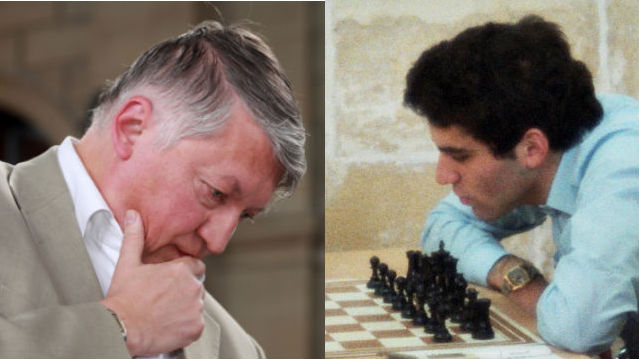Kasparov Beat Karpov in WC Final with Double Fianchetto System - Remote Chess Academy
Por um escritor misterioso
Descrição
It’s been a couple of days since our course “Double Fianchetto System” by GM Sipke Ernst was launched. Let me remind you that you can get this course with a massive 50% discount, saving about $65 USD, by using the coupon “dfs50”. If you don’t know how to use a coupon, please see here. You can also add to this solid opening system, the best guide of opening traps. Buy “Double Fianchetto System” and “Opening Traps” together on or before December 20th, so you can get both courses for the price of one! << Grab the offers now! >> Today we have published the second chapter from the course, where GM Sipke Ernst analyses the famous game played between the legends Garry Kasparov and Anatoly Karpov in the World Chess Championship Match 1987. Before the 24th game, Kasparov was down 12-11, but in the 24th game, Kasparov made a comeback by using the double fianchetto system to win the final game to retain his title. It was probably this game that brought a lot of respect and popularity for this opening system as more grandmasters started playing it often. Watch the instructive video analysis below: As you can see, it’s a highly flexible and strong opening system that you can learn easily. Don’t miss the opportunity to get this course at a flat 50% OFF! 😊

World Chess Championship 1984–1985 - Wikipedia

Karpov vs. Kasparov World Chess Championship 1987
Forty years ago nobody played the Berlin Defense. The move 3…a6

Videos - Internet Chess Club
Why did Garry Kasparov quit chess? - Quora

Anatoly Karpov vs Garry Kasparov World Championship Match, 1984

How to learn a chess opening without feeling totally overwhelmed
What is the Traxler opening in chess? - Quora

One clear win and already tired of winning? - An interview with

Search results for: 'chess' - Internet Chess Club

World Chess Championship 1987 - Wikipedia

course Archives - Page 7 of 15 - Remote Chess Academy
de
por adulto (o preço varia de acordo com o tamanho do grupo)







